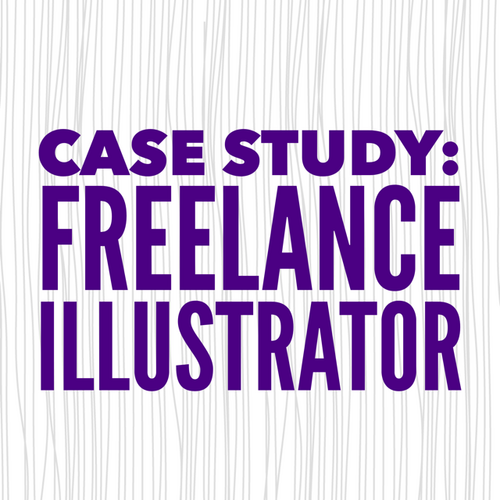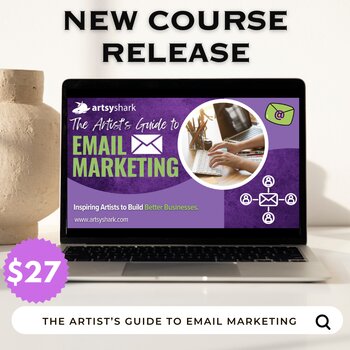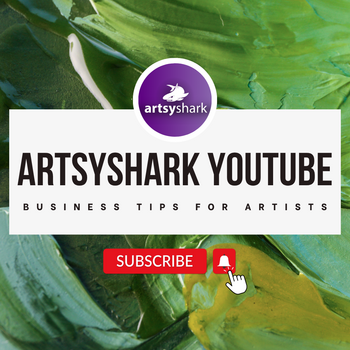By Carolyn Edlund
A freelance illustrator requested a consultation on the the issue of how to present oneself to potential clients. Does this case study offer useful information for your business also?

Background:
The artist client is a freelance illustrator who has been successful working with a number of different types of customers. Her work is used to illustrate advertisements, articles, products and reports. An illustration agency provides her with 80% of her projects. Clients include art directors from ad agencies, marketing teams, publications, cosmetic companies, fashion houses, financial companies and some small businesses.
Challenge:
This talented artist has a diverse portfolio which includes work in ink, pencil, watercolor and graphics. She has been successful with all these mediums. However, she’s been concerned for years that she might be perceived as unfocused because she has more than one style. She has considered working under different names, or even having separate websites for her different styles. Currently she is creating a website and wants guidance on how she can best present herself and her portfolio.
Goal:
Create an effective website which will maximize sales of her services, with an emphasis on repeat business.
Strategies:
I suggested that she flip her perception of being “unfocused” by using her versatility as a selling point rather than a liability. Her unique selling proposition is that she has multiple talents to offer, thereby becoming a valuable resource.
I recommended making her website Home page an “About” page. She can use a professionally taken photograph to create a sense of familiarity, with thumbnail links to the two categories of her portfolio. The text on that page would present her professional background. However, it’s purpose would be primarily directed toward speaking her customer’s language, using keywords that reflect their concerns, and offering solutions for them.
What would this written content look like? It might mention meeting deadlines, quick turnaround, flexibility, and visuals that get results. Presented in short paragraphs or as bullet points, these items work as bite-sized pieces of information that are easily read. I suggested she use a “soft pitch” rather than “hard sell” to connect with prospective customers. Her intention is to pique interest and start developing trust, which is the basis for all relationships.
The long-term aim of the freelance illustrator is to be perceived as a consultative partner to clients, thereby setting up relationships which lead to repeat business. By presenting herself as an effective and reliable problem solver, she conveys a greater sense of value than an illustrator working on only one project. I advised her to fully discuss her business strategy with her agent, so that together they can promote her business in a unified way.
Feedback from the Artist:
I really love the idea of the illustrator as consultant, and not just a creative person who draws pictures for other people. It puts the illustrator in the same sphere as a graphic design consultant rather than an artist doing their own thing. I also believe planting the seed in illustrators that what they do is a business rather than a hobby-type occupation will give them the confidence to be more businesslike with both small and larger clients.
I think it’s a great idea to make this a collaborative effort with the illustrators’ agent (if they have one) or if they are seeking an agent. The “About” page also works as a calling card to potential illustration agents seeking new talent. Of course, the illustrator can go solo and not have an agent, but I find having an agent is a nice introductory way in dealing with clients if you haven’t had that experience.




I am in a similar situation.
I am a (versatile) illustrator and fine artist – and I find that there is not a large overlap in my marketing efforts, indeed I tend to keep them separate to avoid the perception of “commercialism” with my fine art clients.
Consequently, I have two websites, one for fine art / painting and one for illustration / design:
http://www.brennenmcelhaney.com
http://www.brennendesign.com
My advice for “this artist” (curious who she is…) would be: “Feature your artwork that is most like the work that you want to be doing and downplay, or avoid altogether showing your past work that you don’t want to do more of.”
In my case, for example, I’ve done a fair amount of web design (including both of my art websites) but I do not promote myself as a web designer, because I want to focus on painting, drawing and more painterly illustration.
Excellent points, Brennen! I agree with you that if you have more than one audience, dividing your work between sites avoids confusion and speaks more directly towards those prospective customers you want to reach through each website. In the article example, the illustrator could use all of her talents for one customer, and offer diverse alternatives. She had one audience.
You also speak to a subject which is on point for many artists – I find that people I speak to often have more than one passion, and want to pursue several areas. Of course, you can’t do everything. Trying to pursue, let alone promote, too many areas just leads to not being very effective at any one.
Really interesting article, Carolyn. I seem to have developed quite a number of different ‘styles’ and although I don’t see this as a disadvantage, I seem to keep hearing that it is!
(One advantage for me is that it stops me getting stale – if I start to feel I’m running out of steam in one style, I just switch to another for a while!)
I have two websites as well. Promoting both is a little challenging. Having two websites fits my personality, since I work with duality by nature. I also agree with Brennen, separating the commercial from the Fine Art is a must.
The challenge that I am having with my Fine Art side is finding my target audience and marketing to them.
I am finding that working with an artist assistant helps a lot when it comes to getting Administrative work done.